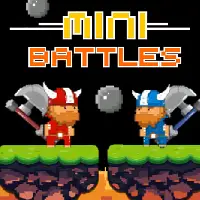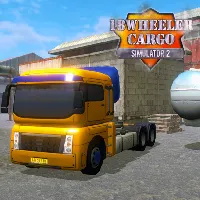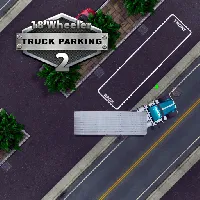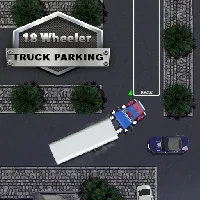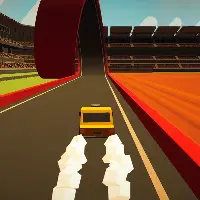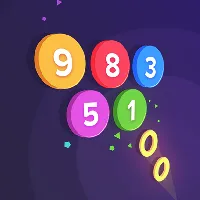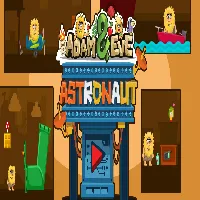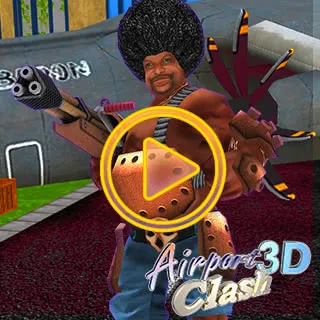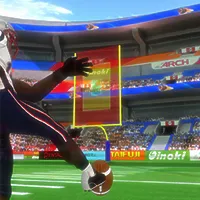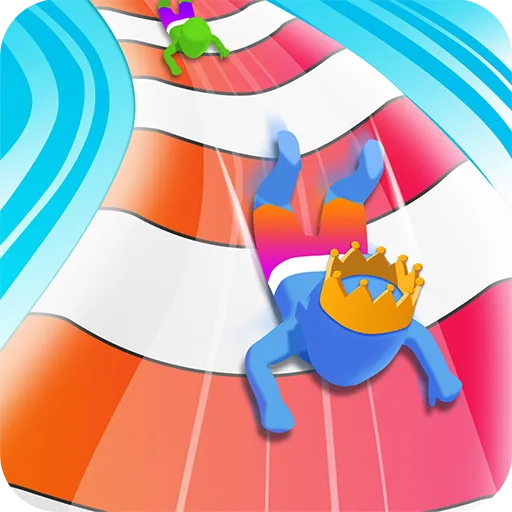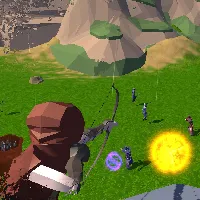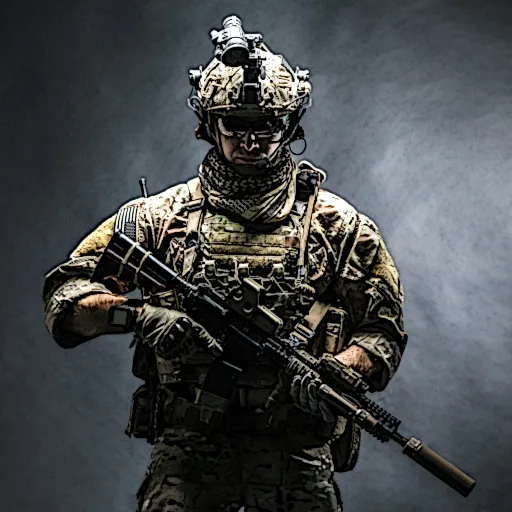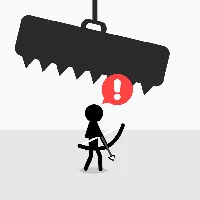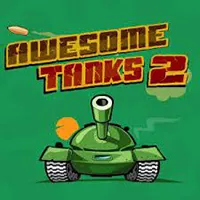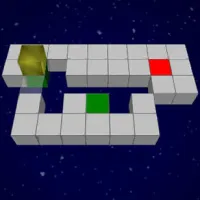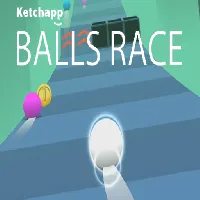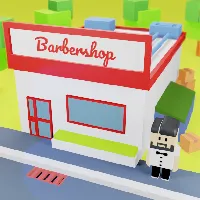HELL TILE
SIMILAR GAMES
Description
Hell Tile - GamePluto
About Hell Tile - GamePluto
Welcome to the definitive exploration of Hell Tile, a truly captivating and diabolical puzzle experience that will test your strategic prowess and spatial reasoning to their absolute limits. Developed with a keen eye for intricate design and a deep understanding of what makes a puzzle game utterly addictive, Hell Tile presents players with a unique challenge. At its core, the game revolves around the strategic placement and manipulation of tiles within a confined grid, aiming to achieve specific objectives or clear pathways. However, the "Hell" in Hell Tile is not merely a thematic flourish; it signifies the escalating difficulty and the demanding nature of the puzzles that await. Players will find themselves constantly re-evaluating their approach, as seemingly simple configurations can quickly devolve into complex conundrums requiring foresight and meticulous planning. We at GamePluto are proud to offer this title as a testament to challenging yet rewarding gameplay, designed to engage both casual players seeking a mental workout and seasoned puzzle enthusiasts craving a true test of their intellect. Prepare to descend into a world where every move counts, and the path to victory is paved with clever solutions and unwavering perseverance.
Unveiling the Core Mechanics of Hell Tile
The fundamental gameplay loop of Hell Tile is deceptively straightforward, yet it forms the bedrock of its profound complexity. Players are presented with a gridded arena, a distinct set of unique and varied tiles, and a specific goal to achieve. These goals can range from connecting designated points on the board with unbroken tile paths, to forming specific patterns, or even clearing the entire grid under certain constraints. The tiles themselves are the stars of the show, each possessing individual properties that influence how they can be placed and how they interact with adjacent tiles. Some might be single squares, while others could be L-shaped, straight lines, or more abstract formations. The rules governing tile placement are critical: tiles must often be placed adjacent to existing tiles, and certain orientations or connections might be forbidden. The dynamic interaction between tiles is where the true depth of Hell Tile emerges. A single misplaced tile can cascade into a series of unresolvable situations, demanding players to think several steps ahead. Understanding the synergies and antagonisms between different tile types is paramount to success. For instance, a certain tile might block another from being placed, or conversely, activate adjacent tiles to perform special actions. This interplay creates a rich strategic landscape where observation, deduction, and experimental play are key to mastering the game's increasingly challenging levels. The interface is designed to be intuitive and responsive, allowing for seamless manipulation of tiles, ensuring that the focus remains squarely on the intellectual engagement rather than cumbersome controls.
Strategic Depth and Environmental Considerations
Beyond the inherent properties of the tiles themselves, Hell Tile introduces environmental factors and interactive elements within the grid that significantly amplify the strategic considerations. These elements can range from impassable obstacles that dictate tile placement pathways, to special grid squares that alter tile behavior when occupied. For example, some squares might cause tiles placed upon them to rotate automatically, while others could act as teleportation points, allowing tiles to instantly move to another designated location on the board. Furthermore, the game often incorporates timer mechanics or move limitations, adding a layer of urgency and forcing players to make efficient and decisive choices. This adds a crucial real-time or turn-based pressure that differentiates Hell Tile from more static puzzle experiences. The visual design of the grid and its interactive elements is not merely aesthetic; it serves as a vital component of the gameplay, providing visual cues and helping players to quickly identify strategic opportunities and potential pitfalls. The color coding and distinct iconography used for different tile types and environmental features ensure clarity, even as the puzzles become more intricate. Mastering Hell Tile requires a comprehensive understanding of not only the tiles but also the ever-changing dynamics of the game board. This multifaceted approach ensures that each new level presents a fresh and invigorating challenge, pushing players to adapt their strategies and discover novel solutions.
The Escalating Challenge: From Novice to Master
One of the hallmarks of a truly exceptional puzzle game is its ability to cater to a wide spectrum of player skill levels, and Hell Tile excels in this regard through its expertly crafted progression system. The initial levels serve as a gentle introduction, carefully designed to familiarize players with the basic mechanics, tile types, and environmental interactions. These early stages are crucial for building a foundational understanding, allowing players to experiment and learn without overwhelming them. As players advance, the complexity of the puzzles begins to gradually increase. This is achieved through several key methods: the introduction of new and more challenging tile configurations, the expansion of the grid size, and the integration of more intricate environmental mechanics. Soon, players will encounter levels that demand multi-stage solutions, where clearing one obstacle is merely a prerequisite for addressing another. The game masterfully balances this escalating difficulty, ensuring that players feel a consistent sense of accomplishment with each solved puzzle, while simultaneously presenting obstacles that require deeper thought and more sophisticated strategies. The feeling of overcoming a particularly daunting challenge in Hell Tile is incredibly rewarding, fostering a sense of mastery and encouraging players to continue their quest for perfection. The design philosophy prioritizes player growth, ensuring that the journey from beginner to an adept Hell Tile player is both engaging and profoundly satisfying. This careful pacing and strategic introduction of new elements are what make Hell Tile so persistently compelling.
Key Features That Define Hell Tile
The enduring appeal and remarkable depth of Hell Tile can be attributed to a distinct set of features that work in concert to create an unforgettable puzzle experience. We have meticulously designed each element to contribute to the overall challenge and enjoyment of the game.
- Diverse Tile Set: A wide array of uniquely shaped and functionally different tiles, each with its own role and impact on the grid, ensuring a constant need for strategic adaptation.
- Intricate Grid Mechanics: Interactive elements within the puzzle grid, such as obstacles, special squares, and environmental triggers, which add layers of complexity and necessitate careful planning.
- Progressive Difficulty Curve: A thoughtfully designed level progression that gradually introduces new mechanics and challenges, providing a smooth learning curve and ensuring sustained engagement for players of all skill levels.
- Objective Variety: Multiple distinct puzzle objectives that go beyond simple pattern matching, demanding different approaches and strategic thinking for each unique challenge.
- Intuitive Controls: A user-friendly interface that allows for seamless tile manipulation, ensuring that players can focus their mental energy entirely on solving the puzzles.
- Visually Engaging Design: A clean and appealing aesthetic that clearly communicates gameplay information, enhancing the player's understanding and immersion in the puzzle-solving process.
- Replayability: The inherent nature of the puzzles, combined with the potential for optimizing solutions, offers significant replay value for players who enjoy refining their strategies and achieving perfect clears.
Mastering the Art of Tile Placement
To truly excel in Hell Tile, a deep understanding of tile placement strategy is indispensable. It is not simply about fitting pieces together; it is about understanding the potential ramifications of each placement. Players must learn to anticipate how a tile will influence future possibilities. For instance, placing a specific tile in a corner might open up an entire section of the board for future expansion, or conversely, it could inadvertently block off a crucial pathway. The shape and orientation of tiles are paramount. A straight piece can connect two distant points, but if placed incorrectly, it might become an immovable obstruction. L-shaped tiles offer more flexibility in navigating corners and tighter spaces, but their placement requires a keen eye for fitting them into complex arrangements. Beyond individual tile manipulation, players must also consider the collective impact of their placements. A series of seemingly optimal moves might, in aggregate, create an unsolvable situation due to a lack of foresight. This is where the concept of "chain reactions" becomes relevant. One tile placement can trigger a cascade of events, either beneficial or detrimental. Learning to initiate positive chain reactions and avoid detrimental ones is a key skill that distinguishes seasoned players. Furthermore, resource management, if applicable through move limits or specific tile quantities, adds another dimension. Players must decide whether to use their most versatile tiles early on or save them for critical junctures. Ultimately, mastering tile placement in Hell Tile is an iterative process of learning, experimenting, and refining one's strategic thinking to achieve optimal and efficient solutions.
The Cognitive Benefits of Engaging with Hell Tile
Hell Tile is more than just a game; it is a potent tool for cognitive enhancement. Engaging with its intricate puzzles provides a wealth of mental benefits that extend far beyond the confines of the digital arena. The constant need for strategic planning and foresight actively sharpens problem-solving skills. Players are compelled to analyze complex scenarios, break them down into manageable parts, and devise multi-step solutions, fostering a more robust and adaptable approach to challenges in all aspects of life. The game also significantly boosts spatial reasoning abilities. Manipulating tiles, visualizing their movements, and understanding their relationships within a confined grid trains the brain to perceive and process spatial information more effectively. This can be beneficial in fields ranging from architecture and engineering to everyday tasks like navigating unfamiliar environments. Furthermore, Hell Tile cultivates patience and perseverance. The inherent difficulty of many levels means that players will inevitably encounter situations that require multiple attempts and considerable effort to overcome. This process of trial and error, coupled with the eventual triumph of solving a challenging puzzle, builds resilience and a positive attitude towards overcoming obstacles. The focus and concentration required to play Hell Tile effectively also serve to improve attention span and cognitive endurance. In an era of constant distractions, the ability to immerse oneself deeply in a task is an invaluable skill. Finally, the satisfaction derived from successfully solving complex puzzles provides a powerful sense of accomplishment, boosting self-confidence and reinforcing the rewards of intellectual effort and dedication. Hell Tile offers a stimulating and rewarding mental workout, making it an excellent choice for anyone looking to sharpen their mind and enhance their cognitive faculties.
Why Choose Hell Tile for Your Puzzle Fix?
In a landscape brimming with digital entertainment, Hell Tile stands out as a premier choice for discerning puzzle enthusiasts. Our commitment to delivering a deeply engaging and intellectually stimulating experience sets us apart. We understand that players seek more than just a fleeting distraction; they desire a game that challenges, rewards, and leaves a lasting impression. Hell Tile is meticulously crafted to meet these expectations, offering a unique blend of accessibility and profound strategic depth. The elegant simplicity of its core mechanics belies the staggering complexity of its later challenges, ensuring that players will always find new puzzles to ponder and new strategies to master. Our intuitive design means you can jump right in and start solving, while the escalating difficulty curve guarantees that you will remain engaged and challenged as you progress. The sheer variety of puzzles and tile interactions ensures that the gameplay never becomes monotonous. Each level presents a fresh opportunity to exercise your intellect and discover novel solutions. For those who crave a true test of their mental acuity, who appreciate well-designed challenges, and who find satisfaction in unraveling intricate problems, Hell Tile is the definitive destination. We invite you to experience the diabolical brilliance and the immense satisfaction that only Hell Tile can provide. Discover why so many are captivated by its challenging yet rewarding gameplay and embrace the ultimate puzzle experience.
Play Hell Tile for free on GamePluto. Enjoy thousands of the best games with no ads, easy access from anywhere, and fun gameplay using your keyboard or just clicking. Have a blast! 🎮
Common Controls:
Keyboard Controls:
- Arrow Keys: Movement (Up, Down, Left, Right)
- W, A, S, D: Alternative movement keys
- Spacebar: Jump or action key
- Enter: Confirm or interact
- Shift: Run or sprint
- Ctrl: Crouch or special action
- E, Q, F: Interact, pick up items, or perform specific game actions
- 1-9: Select weapons or items
- Tab: Open inventory or menu
- Esc: Pause game or open game settings
Mouse Controls:
- Left Click: Primary action (e.g., shoot, select)
- Right Click: Secondary action (e.g., aim, alternate functions)
- Mouse Movement: Aiming or camera control
- Scroll Wheel: Zoom in/out or cycle through items/weapons
Gamepad/Controller (if supported):
- Analog Sticks: Movement and aiming
- A/B/X/Y or Cross/Circle/Square/Triangle: Action buttons for various functions
- D-Pad: Menu navigation or movement
- Triggers (L1/R1, L2/R2): Shooting, aiming, or special actions
- Start/Select: Open menu or pause game
Touch Controls (for mobile-friendly games):
- Tap: Select or interact
- Swipe: Move or aim
- Pinch/Spread: Zoom in or out
- Long Press: Secondary action
